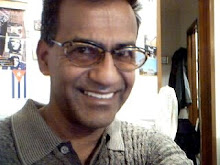
Diabetes Care in America and among American Indians
May 27, 2009
I was intrigued by an article just published in the American Journal of Medicine (2009)122, 443-453
Diabetes prevalence and Therapeutic target achievement in the United States, 1999-2006
What drew my immediate attention was that the authors were doctors and scientists all based in Hong Kong or UK, thus giving me a sense of security that there would less manipulation of data based on the social lived in experience of being in the USA.
Prevalence of Diabetes has increased, there are no surprises there; the control of diabetes as measured by A1C is better now than ten years ago, that is good news indeed; the Cholesterol is coming down so is the blood pressure.. all good news indeed.
For a person, not well versed with medical statistics, I was at a loss to interpret much of the data especially what they had said in the conclusions:
The prevalence of diagnosed diabetes increased significantly from 1999 to 2006. The proportion fo people with diagnosed diabetes achieving glycaemic and LDL targets also increased. However, there is a need to achieve glycaemic, blood pressure and LDL targets simultaneously.
I work as a Consultant Endocrinologist to rather small clinics within the Indian Health Care system in the USA. I am very proud fo my association with the system and the patients, and has been a fruitful association for me as well as patients. Realizing that Endocrine Fellowship (postgraduate studies) alone does not prepare to take care of patients, this lesson was taught me by the Indians, I went back back to university and had a very enjoyable study period gaining knowledge in Medical Anthropology, whereby my vision changed from the body oriented, mechanistic vision of the western medicine to one which is one more holistic, taking into consideration the effects upon the body of society, politics and economics. It augured well for me, since my professional life is linked to people who are marginalized, exiled, oppressed or denied their basic freedoms.
The article sited: Only one in eight patients with diagnosed diabetes reached therapeutic targets for blood glucose, blood pressure and LDL.
It reinforced my experience, even taking a cholesterol lowering medication occasionally will show the LDL to be below 100, but taking anti hypertensive medications or anti diabetic medications only occasionally will not reflect in lower values, thus reflected in the audit or surveys. ( I just saw an Indian patient, whose A1c is 12.4, Blood Pressure is 142/86 and LDL of 95.. she takes her three medications only occasionally).
So, I decided to ask Deb Parker, coordinator of the Diabetes Programme with whom I work. Can we look at our data and find out what percentage of patients have all three indices of “good care” meeting the national standards. Since our individual results are below the national results, should our combined results (all three parameters meeting the standards), be the same, lower or higher than the national levels of only one in eight patients?
Here is where the lived in experience of being an endocrinologist to the Indians comes in handy. From my personal experience of taking care of hundreds of Indian patients with Diabetes, I felt intrinsically that the results must be more than one in eight, but I was not totally prepared for the results the computer and deb parker presented to me.
Putting the following criteria into the computer,
BP less than 131/81
HgbA1c less than 7.0
LDL less than 100 mg/dl
In patients who had come to our clinic in the past one year, 2008 and received care for their diabetes,
How many of them have ALL THREE numbers in the excellent range?
The total number of patients seen during 2008 who carried the diagnosis of Diabetes was 369.
And OUT OF THOSE 369, 194 HAD ALL THREE LEVELS SATISFYING NATIONAL STANDARDS! 52.5%
I was truly elated, now I will leave to the Statistics mavens to pour through these excellent results to come up with their answers or criticism. But now I can proclaim as I have over the period of time:
The Best care for Type 2 DM in these United States of America is in the clinics of the Indian Health Services. ( I would expect VA Hospital system also to produce excellent results since their care model resembles closely to the Indian model of caring for patients with diabetes)
